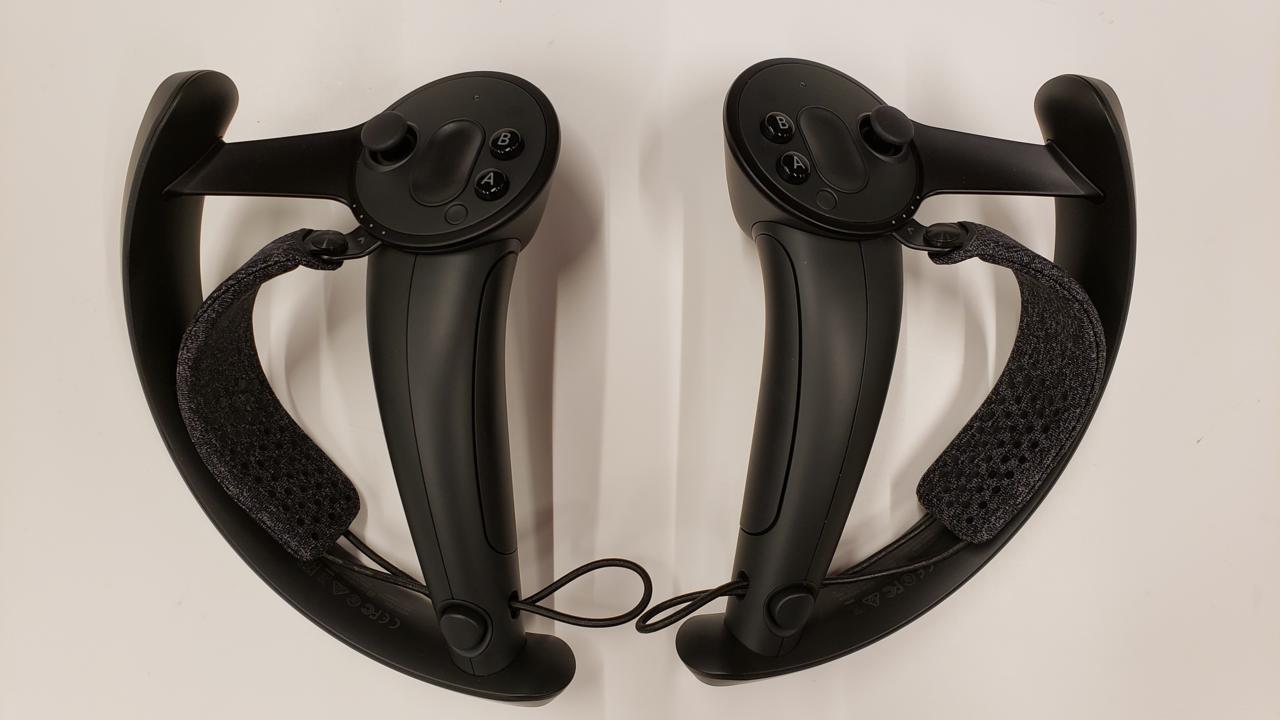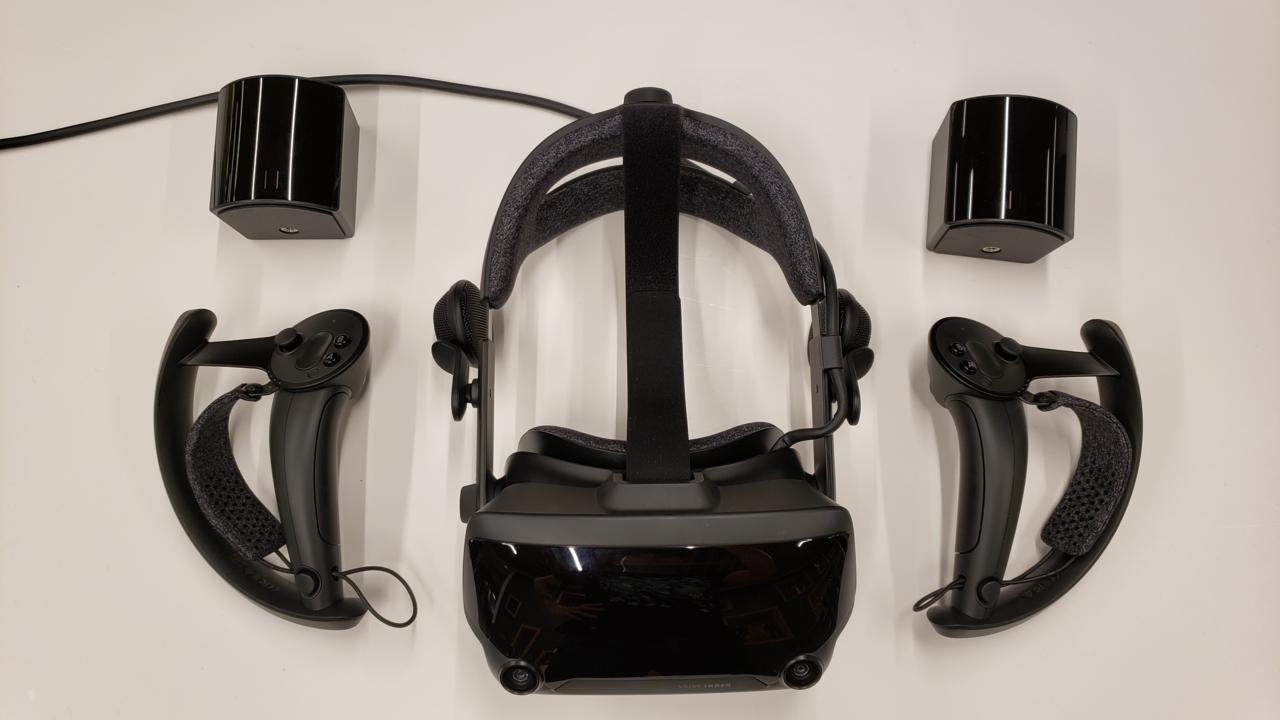Valve has been a pioneer in the PC gaming space, known for many things--Half-Life, Portal, Steam, not counting to three--and it's adding virtual reality to that list with Valve Index. It's the new VR headset that's only recently been confirmed after a series of rumors and leaks, and we've spent time with Index ahead of its June 28 release date.
While we have the final build of the hardware itself, the software is still in the process of adopting the new features that make Index unique--and we will have a full, comprehensive review of Index around its launch date. But based on our early experiences with Index's tech, like individual finger tracking, pressure-sensitive gripping, and enhanced visual capabilities, it's easy to see how Index can push VR gaming forward. However, like all enthusiastic-level platforms, it comes at a significant cost.

In the full Index package, which goes for $1000 USD, you get the headset with integrated audio, a pair of Index controllers (colloquially known as the Knuckles controllers), two 2.0 base station sensors, and all the necessary wires and mounts for setup. You can still use the original 1.0 base stations if you have them, and opt for the headset alone ($500) or the headset and controller bundle ($750). Index doesn't differ much when it comes to traditional PC-based VR setups since you still need the proper space to prop up sensors, outlets to power up those sensors, and your PC nearby since you have a cable running from the headset to your PC.
Getting Index to run is simple; it essentially functions like an HTC Vive since the headset interfaces similarly with the Steam VR ecosystem. You'll go through the same setup process for calibrating height and establishing your boundaries for a room-scale experience; even your in-VR home menu is the same.
Where Index starts to differ is in its display's capabilities; thanks to the high resolution of 2880x1600 (1440x1600 per eye), it delivers a crisp image that makes a noticeable difference for graphical fidelity. For reference, standard HTC Vive headsets display at 2160x1200. But Index's advantage isn't simply in visual clarity--the incorporation of higher refresh rates translates to a buttery smooth viewing experience. Every VR headset thus far has maintained a sufficient 90Hz refresh rate, but Index's display can go up to 120Hz and 144Hz, raising the cap for maximum framerate. It's worth noting that setting it to 144Hz caused a seemingly slight, automatic downscale in resolution in our case.
After spending some time in applications built for Index, it's easy to see how it lays the foundation for innovation in VR, not just in visual fidelity, but also in terms of interaction.
It's enticing to see a VR platform integrate the advantages that come with faster displays--this could help alleviate nausea that may come from extended sessions. With my longest single session being an hour and a half, I didn't come away with the same level of disorientation I usually experience after coming out of VR (though refresh rate won't help with disorientation caused by artificial locomotion). However, your mileage may vary as keeping up with these boosted refresh rates depends on the conditions of your PC.
The minimum and recommended specifications to run VR games with Index haven't changed from Vive and Rift, but it goes without saying that high-end PC specs are necessary to get the most out of Index. So far, we've been using Index on a PC equipped with an Intel Core i7-6700K CPU, an Nvidia RTX 2080 video card, and 16GB of RAM--having played Pavlov VR, Beat Saber, and Arizona Sunshine, our computer is up to the task of maintaining the necessary frame rates to take advantage of a 120Hz refresh rate.

Another aspect in which Index is breaking new ground is with the inclusion of the "Knuckles" controllers; the Index controllers are capable of tracking individual fingers and recognizing pressure-sensitive grip. What makes this especially intuitive is that the controllers include a strap that lightly squeezes your hand against the controller, allowing you to freely gesture without having to hold on.
During this pre-launch period, however, implementations of the tracking features are limited to a handful of games and tech demos, like Aperture Hand Lab and Moondust. Most games currently recognize the Index controllers as Vive wands--for now, the pressure-sensitive grip is little more than a glorified grip button, and the difference in controller layout can cause confusion. We expect to see more developers account for Index control schemes once it's publicly available.
Aside from a few accessories and novelty controllers, Vive users have been using the same thick wands, reliant on trackpads for buttons, which certainly feel outdated at this point. Oculus has had the most sensible solution with the Touch controllers, but it's possible that--with smart implementation--the features of the Index controllers can lead to new mechanics in VR games.
As for the headset itself, Index adopts a similar approach to wearability as both the PlayStation VR and Oculus Rift S, two of the best headsets in this department. The entire headstrap moves as one unit, and adjusting the tightness is relegated to a dial on the back of the strap. The firm, dense face and headstrap pads also make long sessions possible and don't pinch or put an uneven amount of pressure in any one area. If there's one minor shortcoming here, it's that Index feels a bit front-heavy; the entire unit weighs in at 810g, close to the Vive Pro (832g), and quite a bit more than the PSVR (647g) and Rift S (600g).

Index's approach to audio is an interesting one; the headset doesn't come with on-ear headphones or an audio jack to connect your own device. Instead, Index uses attached speakers that hover over your ears without making contact. These are capable of positional 3D audio, but from a simple audio quality standpoint, they impress--songs in Beat Saber and sound effects in Arizona Sunshine come out loud and clear. Unfortunately, by design, you are limited in terms of sound isolation if you're either in a loud room or if you want to avoid disturbing others around you.
After spending some time in applications built for Index, it's easy to see how it lays the foundation for innovation in VR, not just in visual fidelity, but also in terms of interaction. For all that it's doing to change the VR landscape, the high cost of entry (coupled with the cost of a PC to get the most out of it) and the reliance on wired tech will make Index inherently prohibitive for some. Whether or not Index lives up to its potential will also depend on how developers integrate its more interesting features. We look forward to seeing more games and applications in action when Index launches on June 28.




















